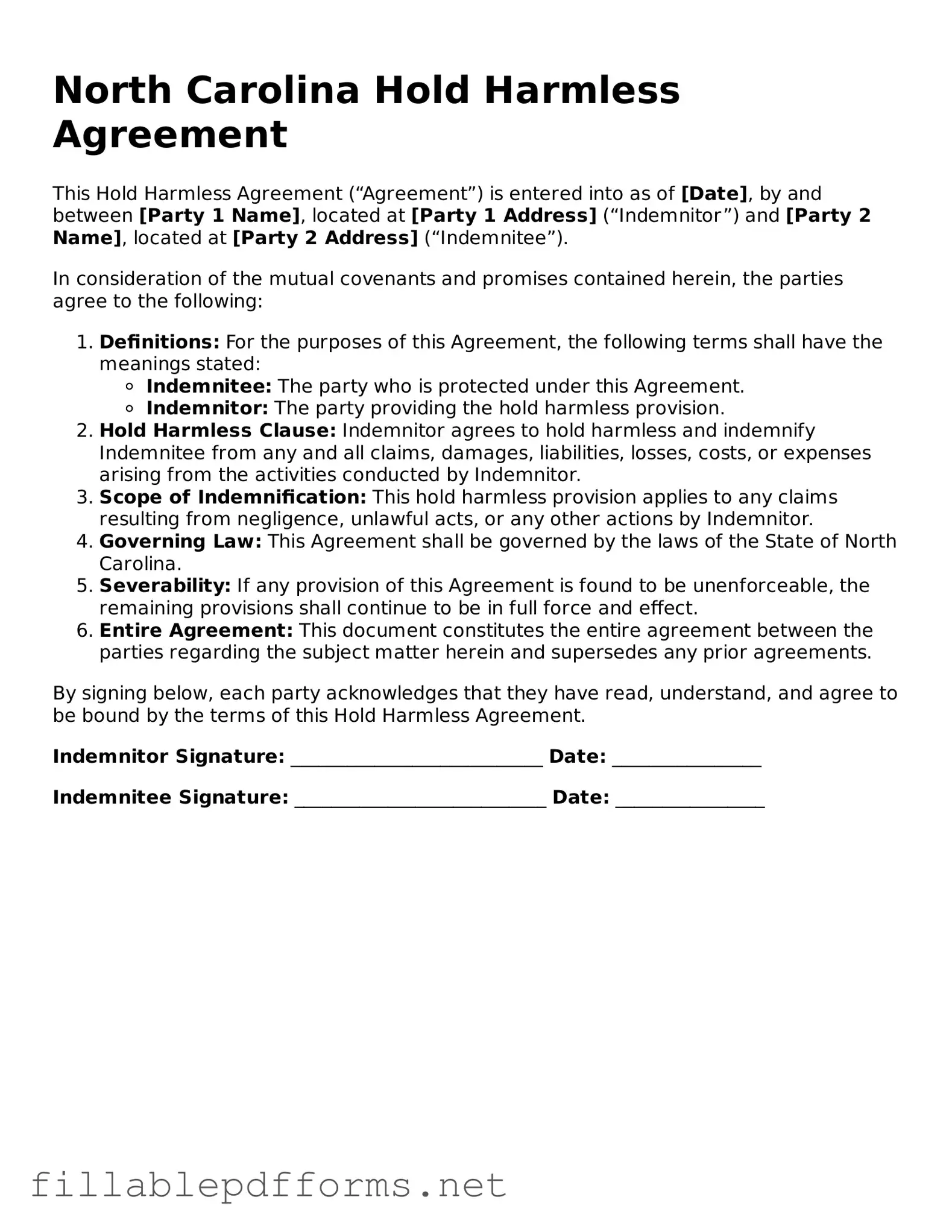Attorney-Verified Hold Harmless Agreement Form for North Carolina State
A North Carolina Hold Harmless Agreement is a legal document designed to protect one party from liability for any damages or injuries that may occur during a specified activity or event. By signing this agreement, individuals or organizations agree to assume responsibility for any risks involved, effectively shielding the other party from legal claims. Understanding this form is essential for anyone looking to minimize their exposure to potential lawsuits while engaging in various activities.
Launch Editor Here
